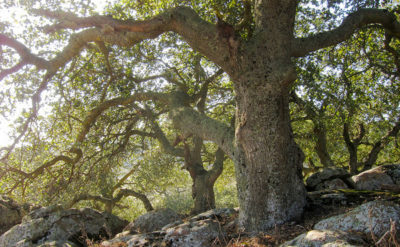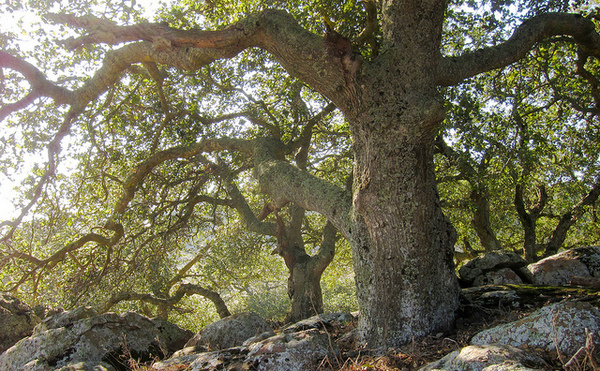EDITOR’S NOTE | By Bret Bradigan
Ojai: Made in the Shade

A Coastal Live Oak
One of Ojai’s most distinctive attributes is our urban forest — the ancient, sprawling coastal and live oaks. Back in 2006, the city did a partial census of mature trees and came up with a count of about 3,200 trees.
When seen from the air, certain large sections of the city disappear beneath the oak canopy. Even from the ground level, with a little squinting, you can imagine Ojai as the Chumash may have seen it — mottled, mixed shade beneath sprawling branches, some as large as the main trunk. Visitors often illustrate Ojai’s charm by how we have built our streets around the trees in several places.
But our forest is diminishing at an alarming rate — and not just from the Thomas Fire. The extended drought has left the oaks vulnerable to insect infestations, root rot and loss of foliage from the parched soil. When you compare aerial photos from the 1920s or ‘30s, you can see the bare spots appearing. There are several causes – development being only one of them. But the drought, and sporadic soakings, make even the most massive trees vulnerable to windstorms or lightning.
The fact is that the vitality of the urban forest is closely tied to the vitality of our economy. Though we live in a semi-arid climate, averaging barely 20 inches of rain per year, our established forests provide shade, beauty and great value to homeowners.
In a “A Pattern Language,” Christopher Alexander wrote, “The trees that people love create special social places; places to be in, and pass through, places you can dream about, and places you can draw.” In a place like Ojai, where art, culture, ambience and the gentle ease of human interaction take on deeper shades of meaning, you could say that we are made in the shade. Let’s hope that quaint colloqualism continues to be true in the future. (Portions of this were reprinted, with permission, from the April 2013 issue of Ojai Monthly).

